Art Fairs
See the 10 Best Booths at This Year’s Frieze London Art Fair
From Gavin Brown's Enterprise to ShanghART, these galleries staged the most dazzling presentations at the fair.
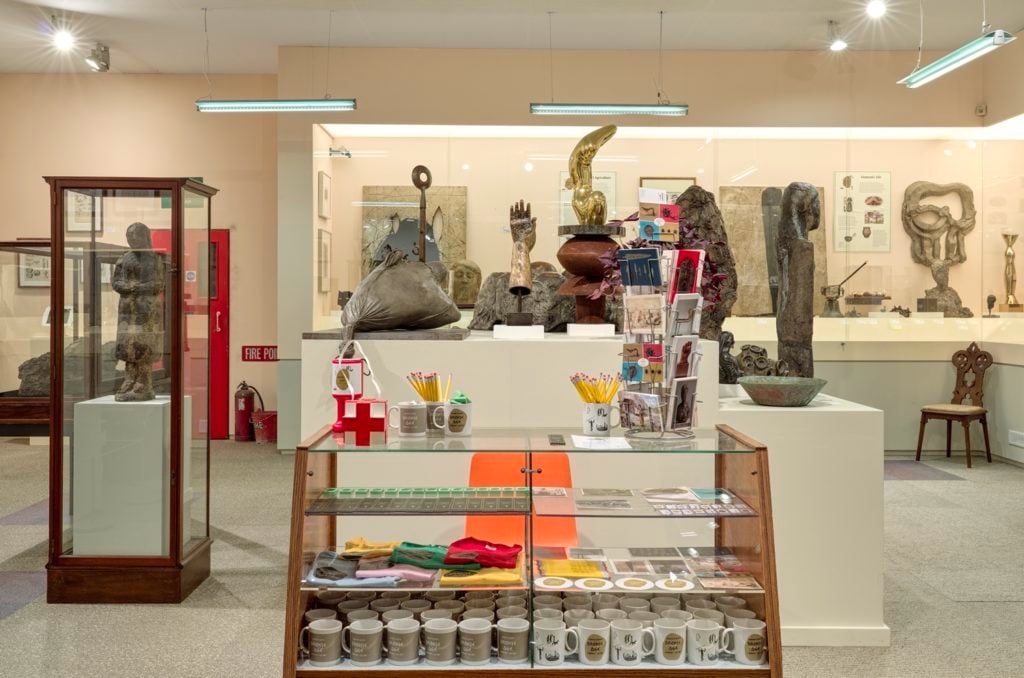
From Gavin Brown's Enterprise to ShanghART, these galleries staged the most dazzling presentations at the fair.

Lorena Muñoz-Alonso

The 15th edition of Frieze London was swarming with VIPs, curators, and critics from the moment the fair opened its doors for preview yesterday at 11 am, bringing offerings from over 160 galleries from 31 countries to the English capital.
This year, the fair’s early highlights include the strong curated sections like Focus, selected by Ruba Katrib and Fabian Schoeneich, and the attention-grabbing “Sex Work,” curated by Alison M. Gingeras and featuring presentation by women artists working with a sexually explicit strand of feminism in the 1970s and ’80s.
Meanwhile, although more conventionally commercial with painting still the favored medium, the main section also yielded some jewels. Here, in no particular order, are the 10 booths that stood out this year.
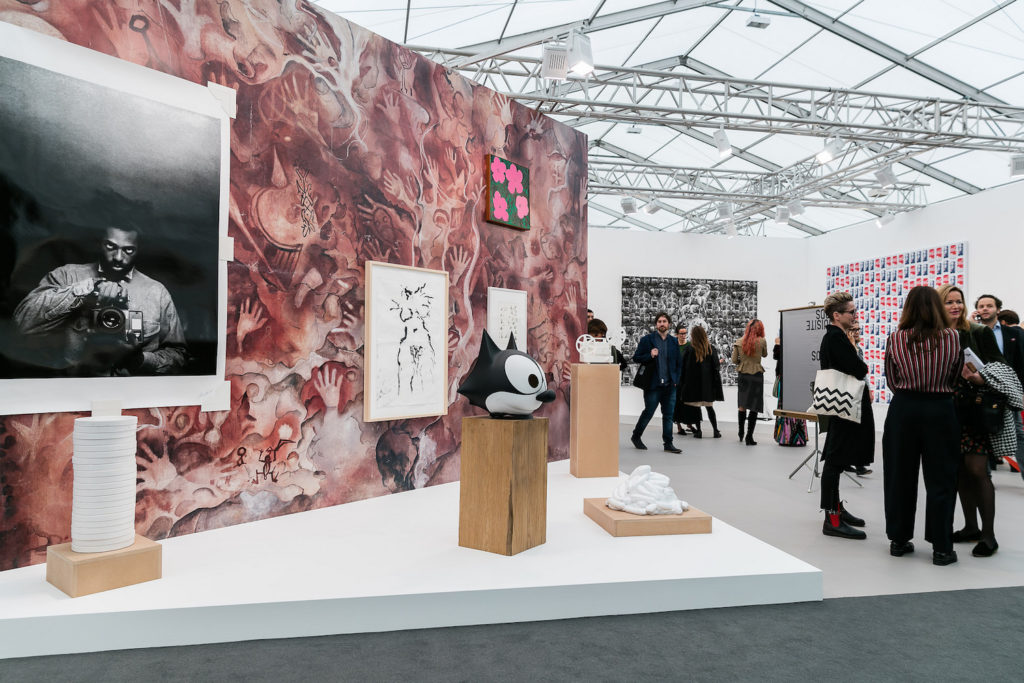
Gavin Brown’s Enterprise, Frieze London 2017. Photo by Mark Blower. Courtesy of Mark Blower/Frieze.
The New York-based dealer managed to combine blue-chip chutzpah with the impossibly hip, offering a group presentation that included Mark Leckey, Thomas Bayrle, Jonathan Horowitz, Joan Jonas, Sturtevant, and Rirkrit Tiravanija.
The booth also featured a number of works by Arthur Jafa, capitalizing on the critical success of the artist’s recent solo at the Serpentine Gallery.
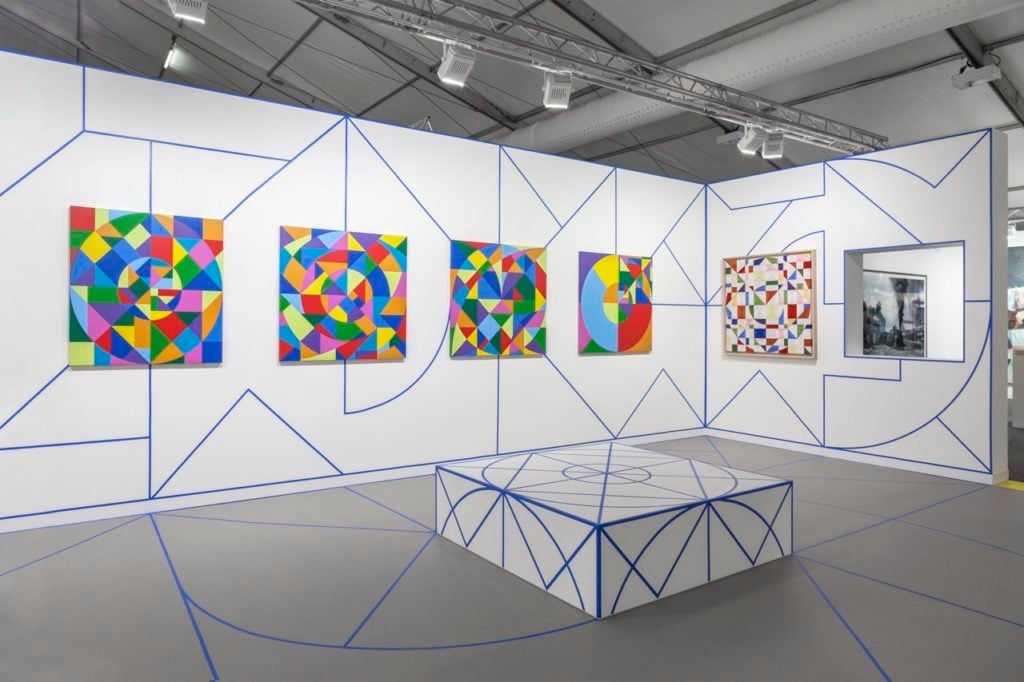
View of Timothy Taylor’s booth at Frieze London 2017. ©Eduardo Terrazas, courtesy Timothy Taylor, London/New York.
The London gallery has staged an impressive solo presentation by the 81-year-old Mexican artist and architect Eduardo Terrazas. The artist has not only created the 23 works on view, but also the design of the booth. Using the floor and walls like a white canvas, Terrazas has crafted geometrical shapes with blue lines, creating a space that feels as if walking inside one of his paintings.
The works, with prices ranging from £10,000 to £40,000, include acrylic pieces on canvas, works made of wool yarn on wooden board, and four vintage drawings from 1974. This overview of the oeuvre of a founding member of Mexico’s contemporary art scene strikes the perfect balance between art historical pieces and very recent works.
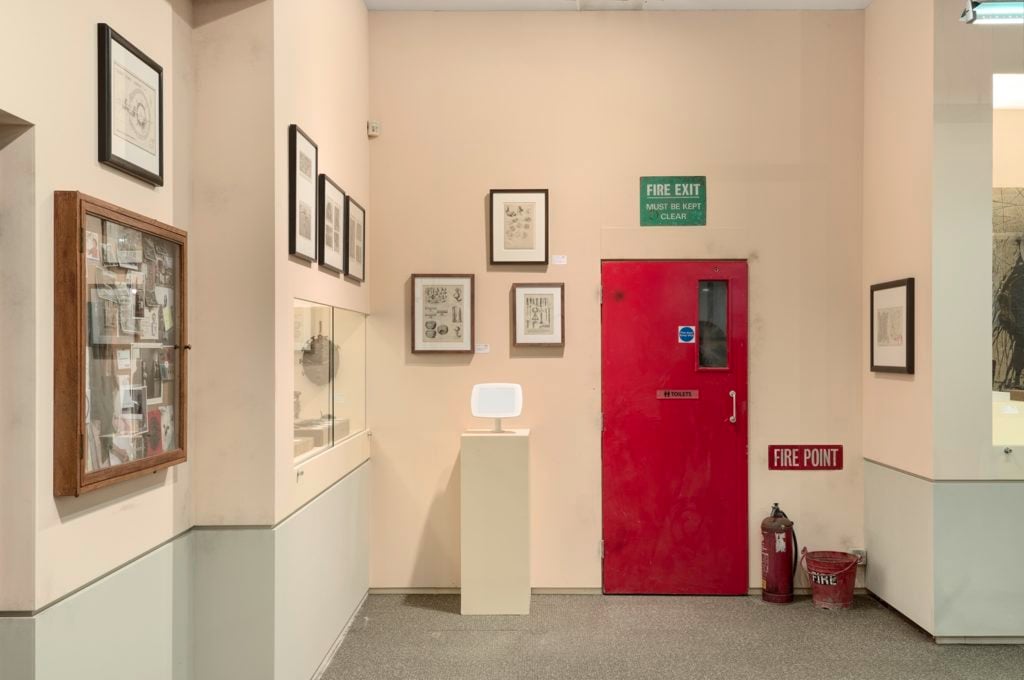
Hauser & Wirth at Frieze London, 2017, “Bronze Age c. 3500 BC–AD 2017.” Photo: Alex Delfanne, courtesy of the artists, estates, and Hauser & Wirth.
Speaking of art-historical presentations, the ever-expanding powerhouse has delivered yet another sterling booth fashioned to mimmic a fictional Bronze Age presentation of the kind likely to be found at a dutiful, dusty regional museum.
Titled “BRONZE AGE c. 3500 BC – AD 2017,” the presentation was meticulously created in collaboration with Mary Beard, professor of Classics at the University of Cambridge. The booth includes artifacts on loan from international museums and private collections nationwide, as well as sculptures by gallery artists like Louise Bourgeois, Henry Moore, and Fausto Melotti. The conceit is so deliciously detailed that it even features a museum shop that sells trinkets (affordable collectibles alert!).
Unsurprisingly, the booth was a solid commercial hit: by the end of the day, reported sales included a major bronze sculpture by Hans Arp for $1,100,000, which sold to a private collection in Los Angeles; a work by Subodh Gupta for €150,000; a bronze panel by Rashid Johnson for $125,000; a Martin Creed sculpture for $75,000; and a range of smaller-scale works including two Marcel Duchamp editions.
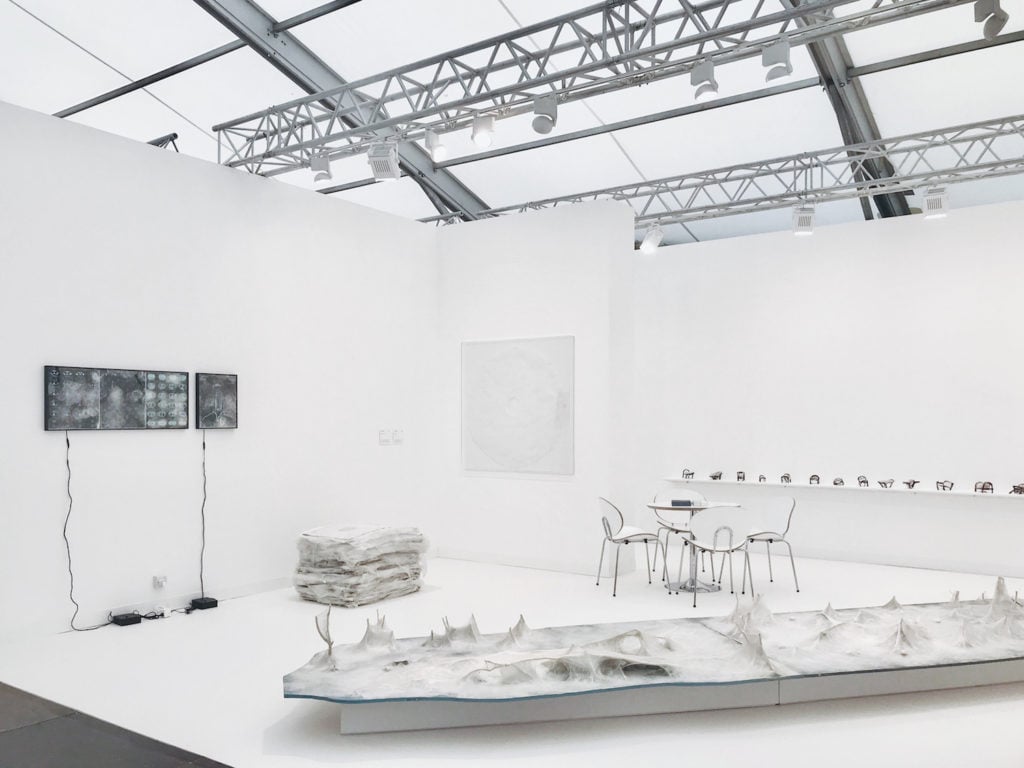
View of ShanghART’s booth at Frieze London 2017. Courtesy the gallery.
The Chinese gallery focused on a solo presentation by the artist Liang Shaoji, who has been employing the unexpected medium of silkworms in his unique sculptural and video work for nearly three decades. The 72-year-old artist, a hermit who lives in isolated Tiantai County, started breeding silkworms in 1989, and has been observing how they respond to different surfaces such as metal and glass ever since.
At the fair, a floor piece and a number of hanging sculptures covered in silk filament are eerily beguiling, half science-fiction prop, half Victorian-era find. A video documentation of the artist’s fascinating process is shown on one wall. With prices ranging from £17,000 for smaller sculptures to £87,000 for the large hanging ensembles, the work of Shaoji will surely tick the boxes of many curious collectors.
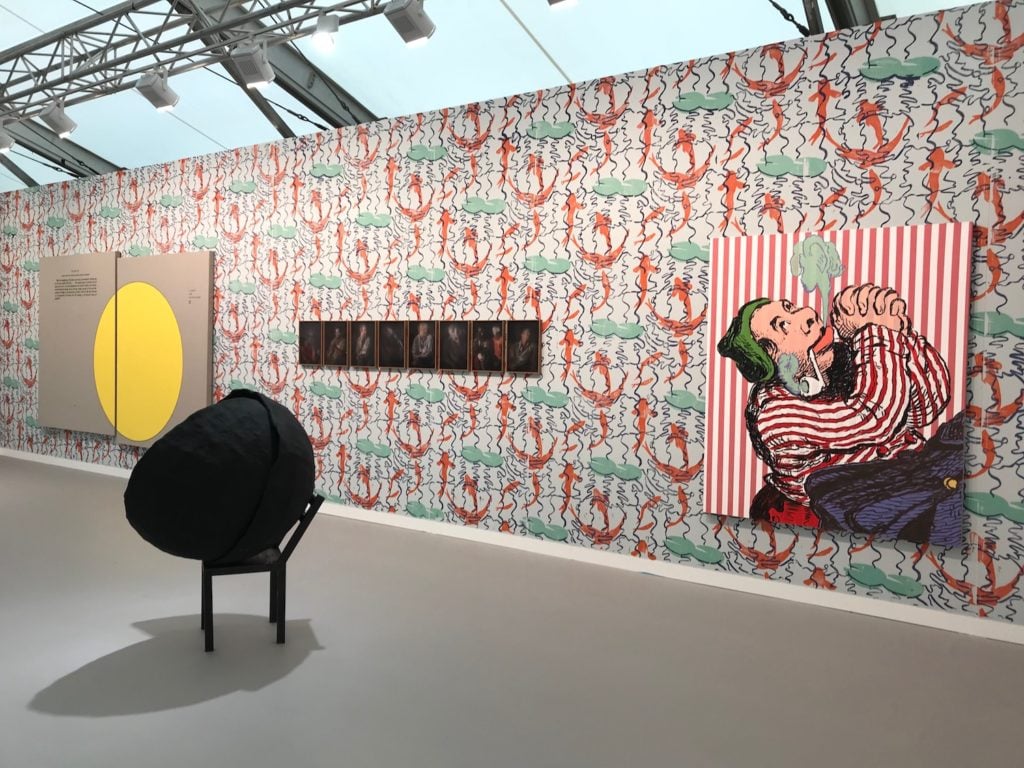
View of Travesía Cuatro’s booth at Frieze London 2017. Photo Lorena Muñoz-Alonso.
Few booths were more eye-catching than Travesía Cuatro’s phenomenal group presentation featuring the works of Charlie Billingham, Mateo López, Gonzalo Lebrija, Elena del Rivero, and Jose Dávila.
The mix of British, Spanish, Mexican, and Colombian artists did really pop against Billingham’s stencilled wallpaper, priced at £10,000. The young London-based artist is also showing a number of satirical paintings (with prices ranging from £6,000 to 13,000) that draw inspiration from politicized illustrations in the style of William Hogarth.
Billingham’s composition complemented the geometrical canvases and texturized sculptures of his Latin-American counterparts. Prices for their works ranged from $5,000 for a Lebrija piece to $75,000 for a work by Dávila.
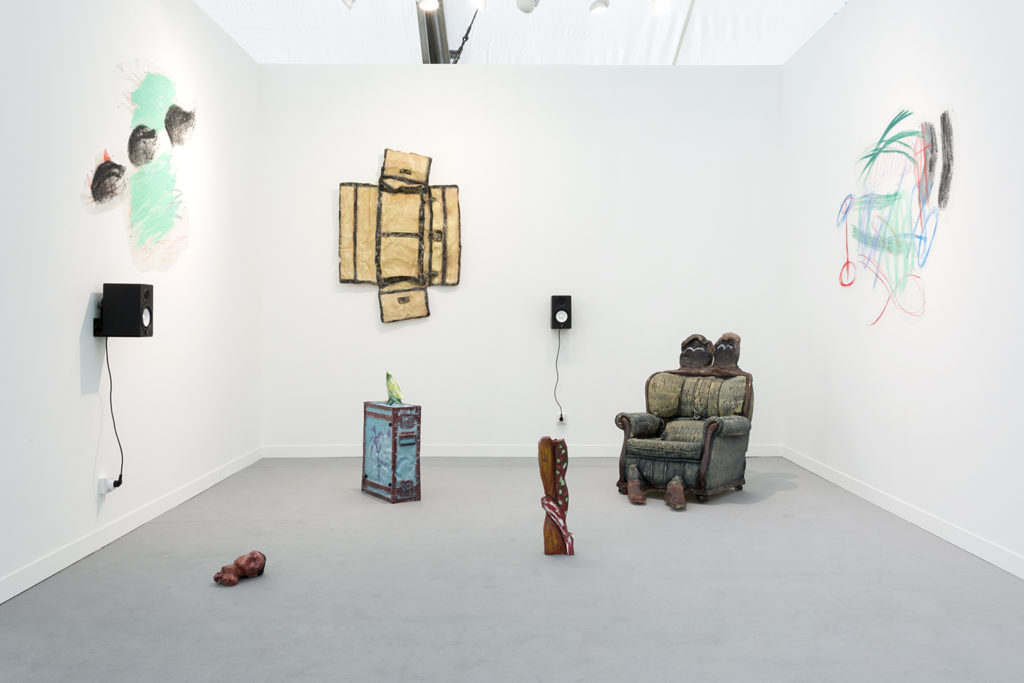
View of Múrias Centeno’s booth at Frieze London 2017, featuring works by Musa Paradisiaca. Courtesy the gallery.
Nearby, in the Focus section, the rising gallery Múrias Centeno is showing Portuguese “cool kids” Musa paradisiaca (Eduardo Guerra and Miguel Ferrão). Their work revisits lived stories, narratives, and events through sculptures, films, and sound pieces whose materiality deceives both eye and ear.
At the fair, a group of sculptures ostensibly made of wood, leather, ceramic, and textiles are in reality all made of polyester resin and fibreglass. With prices ranging from €4,000 to €12,000, the work of the duo is certainly one to keep an eye on.
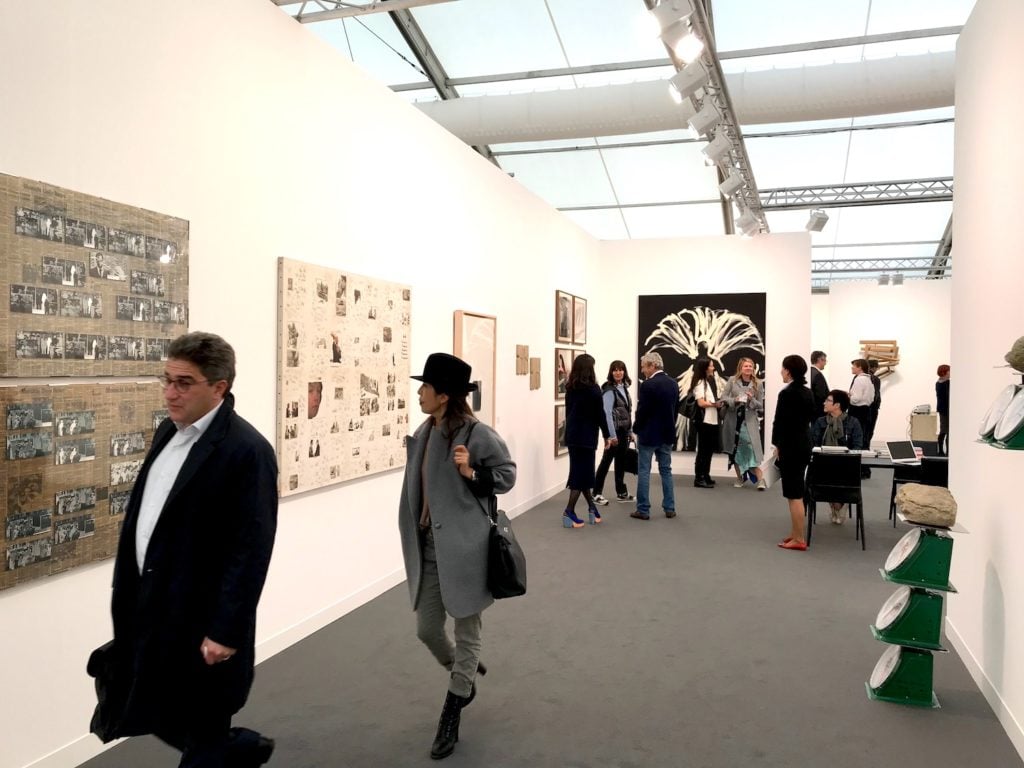
View of Gallery Hyundai’s booth at Frieze London 2017. Photo Lorena Muñoz-Alonso.
The Seoul powerhouse has staged a fantastic group presentation featuring Korean artists active from the 1970s onwards. The delicate works on Hanji paper by Minjung Kim are standout pieces, as are featured works from the Dansaekhwa movement by artists including Chung Sang-Hwa, Lee Ufan, and Park Seo-bo.
Notable too was the selection of painted photographs by Seung-taek Lee, an ongoing series that was started back in the 1950s as “non-sculpture” experiments in which the artist uses ordinary objects as raw material and imbues them with multiple meanings.
Hyundai’s overview of Korean artists has been so carefully curated that at moments the booth felt like a museum presentation, shining a light on a fascinating art scene.
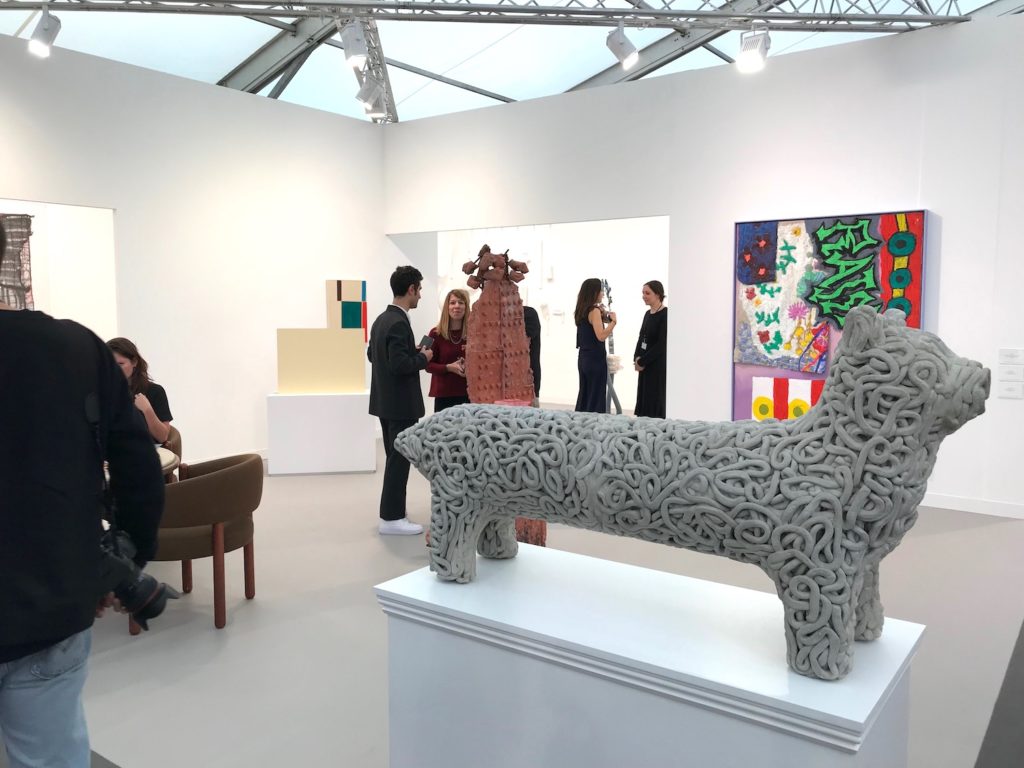
View of Herald St’s booth at Frieze London 2017. Photo Lorena Muñoz-Alonso.
While other local galleries are shutting up shop, London mainstay Herald St is expanding and, judging by its presentation in the main section of the fair, it’s easy to see why: its roster of artists is exciting, balancing risk-taking with crowd-pleasing appeal.
Fresh from launching its second space in London, near the British Museum, Herald St’s Frieze outing features works by Ida Ekblad, Michael Dean, Matthew Darbyshire, Robert & Trix Haussmann, Amalia Pica, Matt Connors, Annette Kelm, and Alexandra Bircken. With an emphasis on sculpture, the selection packed a punch while remaining relatively commercial.
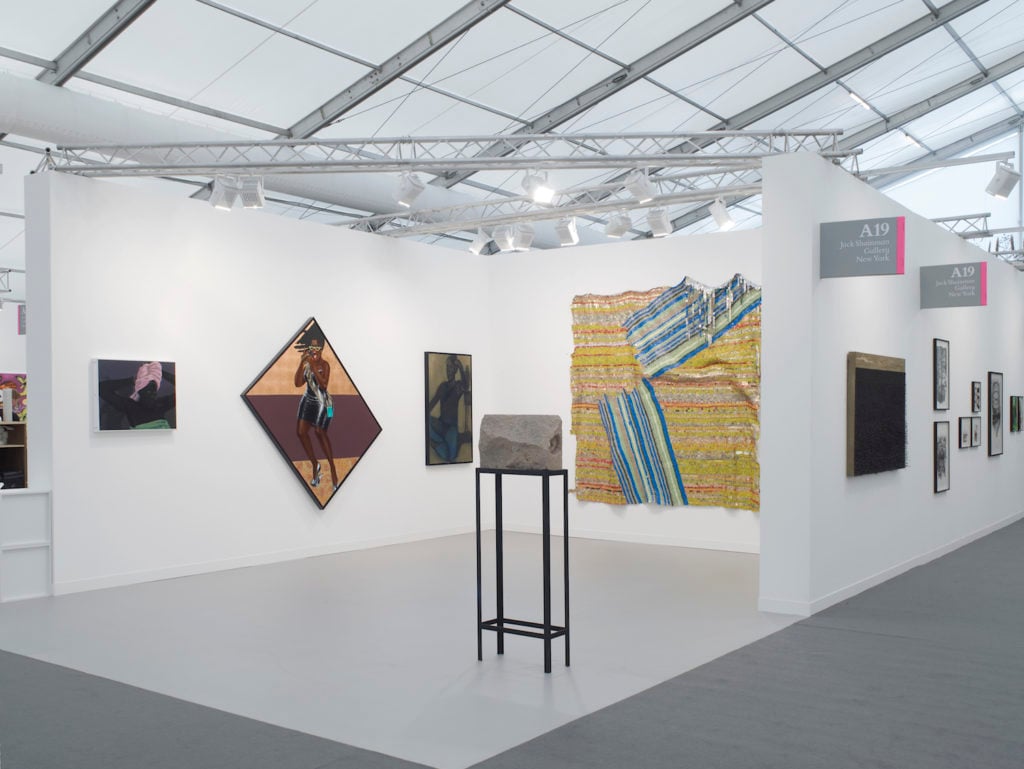
View of Jack Shainman’s booth at Frieze London 2017. Courtesy the gallery.
With an emphasis on paintings by artists including Kerry James Marshall, Barkley L. Hendricks, Lynette Yiadom Boakye, Toyin Ojih Odutola, Hank Willis Thomas, and Carrie Mae Weems, the Frieze London debut of the New York gallery was absolute stunner.
The booth was also a hit with collectors, with prices ranging from $35,000 to $1.5 million. Halfway through preview day, the gallery had reported sales of works by Yiadom Boakye, Willis Thomas, James Marshall, Yoan Capote, and Titus Kaphar, whose work was sold to an unnamed “important institution.”
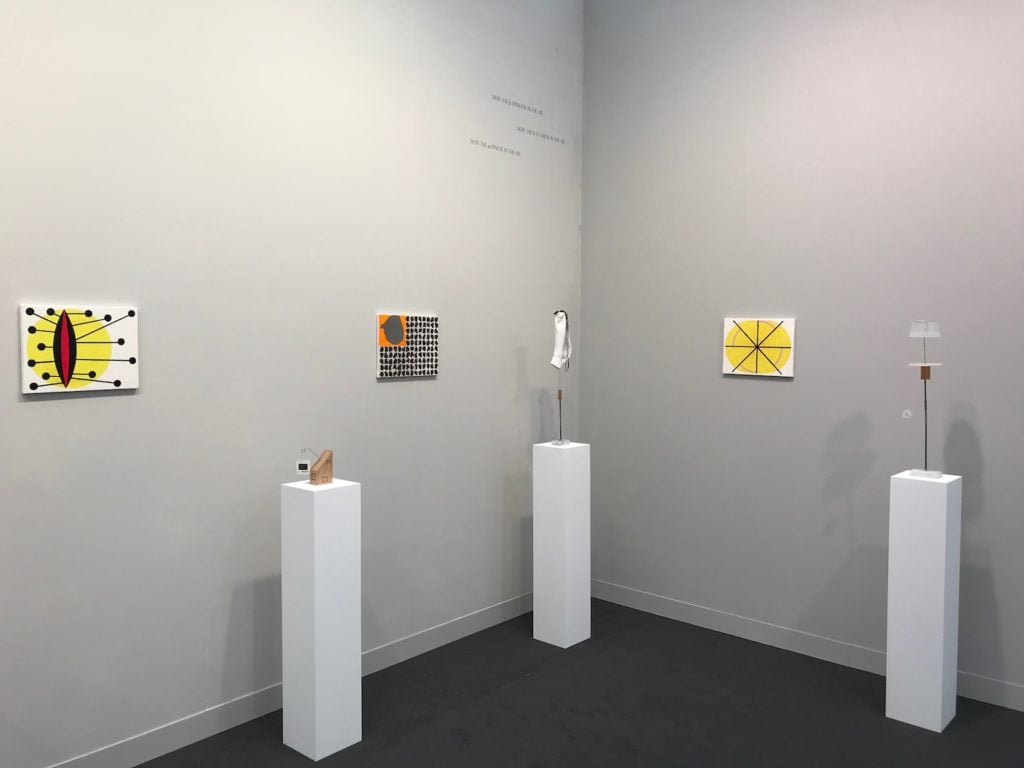
View of MaisterraValbuena’s booth at Frieze London 2017. Photo Lorena Muñoz-Alonso.
Last but not least comes the exquisite dialogue between B. Wurtz and Néstor Sanmiguel Diest staged by MaisterraValbuena. The small paintings by the Spanish artist, created in the 1990s, were the perfect counterpart to B. Wurtz’s small-scale sculptures.
The combination of molecular forms with the humorous “neo-Povera” of the American artist made for an elegant moment of calmness amid the louder presentations in the tent. There’s also time for quiet contemplation at Frieze, this booth seemed to say.
The 2017 edition of Frieze London runs from October 5-8 at Regent’s Park.